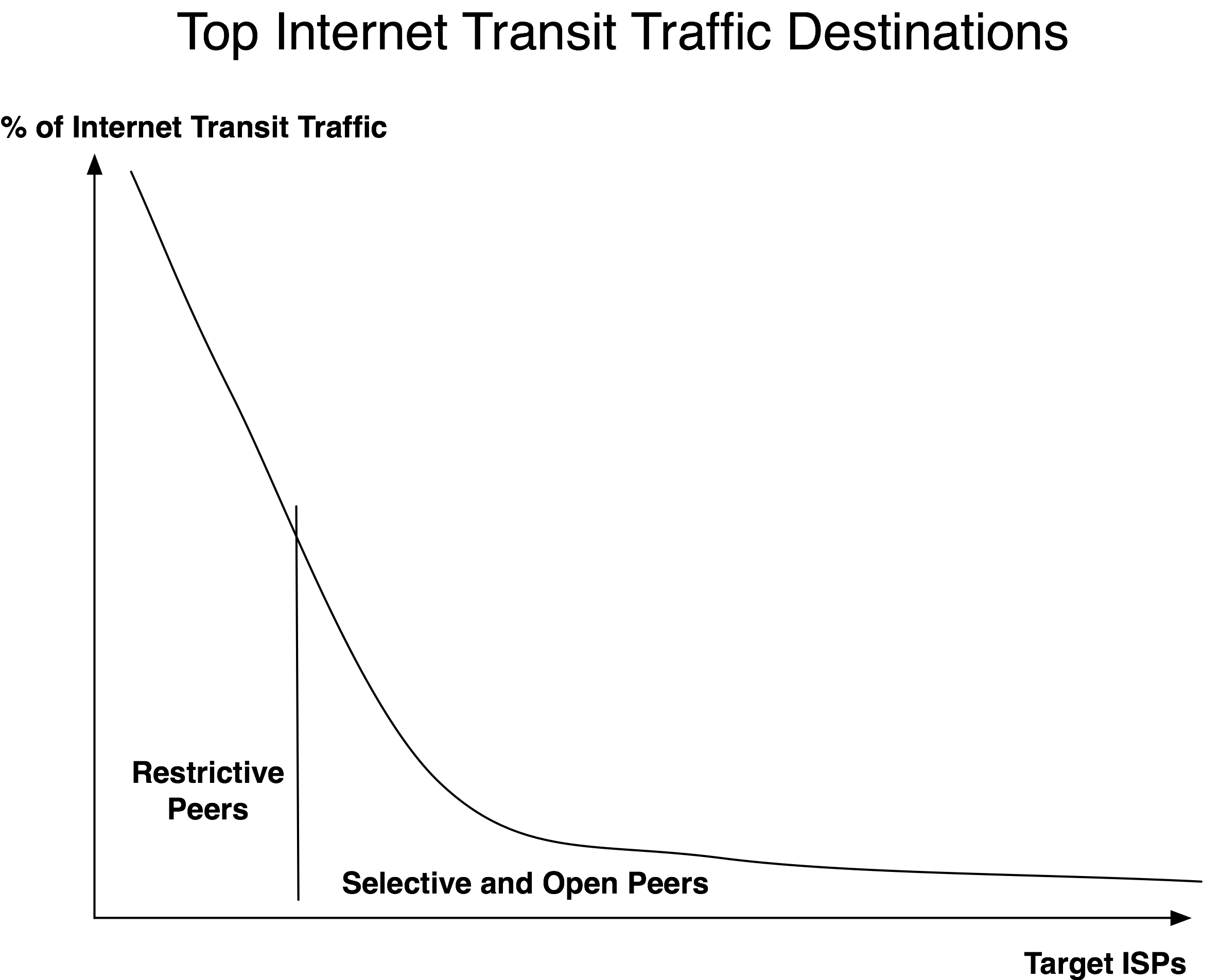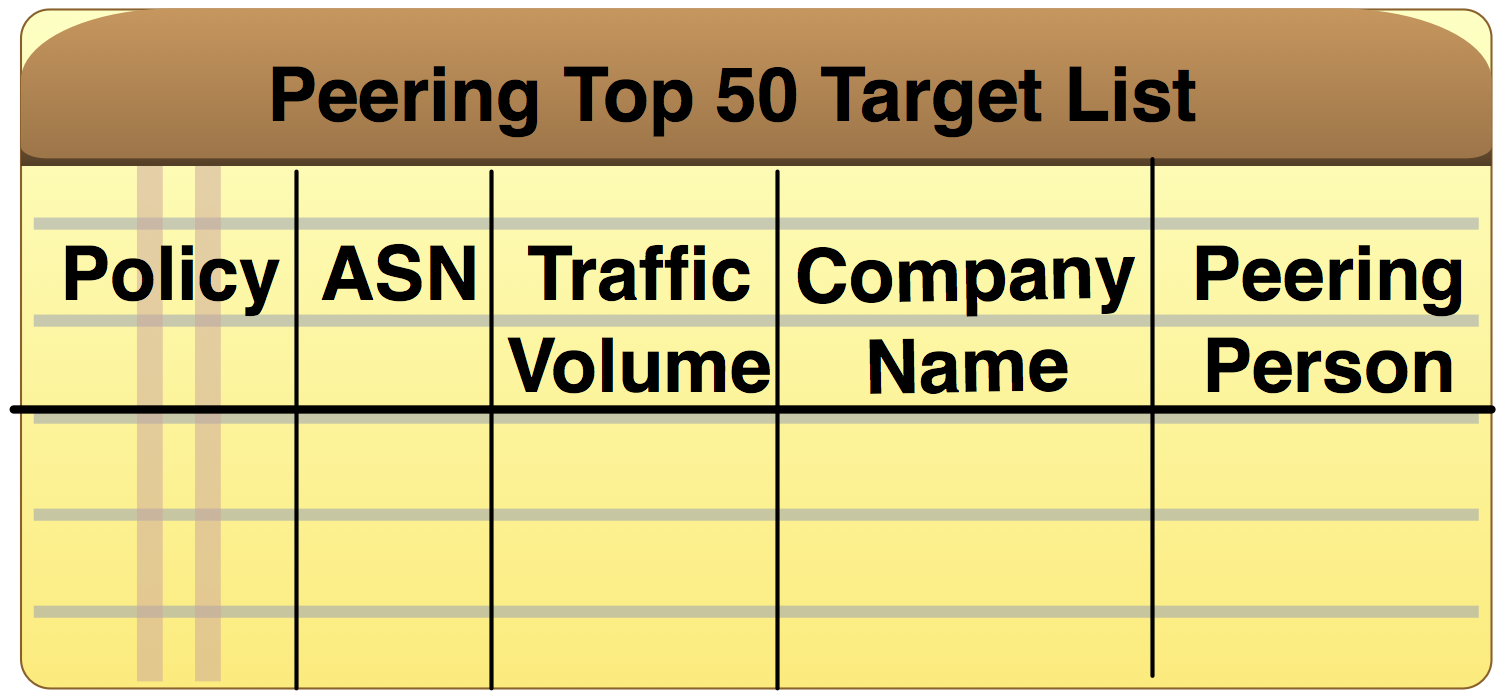To answer this question we must first understand the motivations and inclinations of the networks that we want to peer with.
What are the target ISPs' peering motivations? To answer this question, we need to separate the ISP Peering Inclination from its articulated Peering Policy.
Definition: A Peering Inclination is a predisposition towards or against peering as demonstrated by Peering behavior in an Internet Peering Ecosystem.
Definition: A Peering Policy is an articulation of the Peering Inclination; it documents and defines the prerequisites to peering.
The Peering Policy is what one might find on an ISP web site, or it may be received after signing a nondisclosure agreement. But to predict the peering behavior, the underlying Peering Inclination is important.
There are roughly four categories of Peering Inclination observed in the field, as shown in Figure 9-5.

An "Open" Peering Inclination is a willingness to peer with any other player in the ecosystem and articulated as an Open Peering Policy.
A "Selective" Peering Inclination is the willingness to peer with any other player, but with a few requirements. A common requirement is that there must be a minimum traffic volume for peering to be worth setting up as articulated in a Selective Peering Policy.
A "Restrictive" Peering Inclination reflects a desire not to peer with anyone else. If they have a publicly available Restrictive Peering Policy it will be difficult to meet. More commonly, the policy will not be publicly available, but perhaps available after signing a Non-Disclosure Agreement.
A "No Peering" inclination reflects the desire not to peer at all. Purchasing transit is the preferred method for these players. You will not likely find a No-Peering Policy articulated anywhere.
It depends on who you are, what value you provide, and how you strategically play your peering cards.
It turns out that a large chunk of traffic is not easily peerable since some ISPs are not inclined to peer. After working with many ISPs, content providers, CDNs, etc. we have seen traffic distributions as shown below.

When I work with clients I generally just write off the restrictive peers. Even though they represent a large amount of potentially peerable traffic, they won't peer with you so don't waste your time.
The remaining targets are worth working on though. I typically start out the peering coordinators with the low hanging fruit, those companies that I know will peer openly with just about anyone. After we go through the negotiation process and configure the peering sessions, we move on to more of the same. The peering coordinator gets more comfortable with the process, the value is easy to see. Then we move towards once of the more selective peers. Usually after a few weeks or months, the peering coordinator is off on their own and peering up a storm. My last client estimates that they are peering away 30% of their traffic away for free now.
We execute this plan using a top-50 list as shown below, but color coded to highlight the chances of success.
